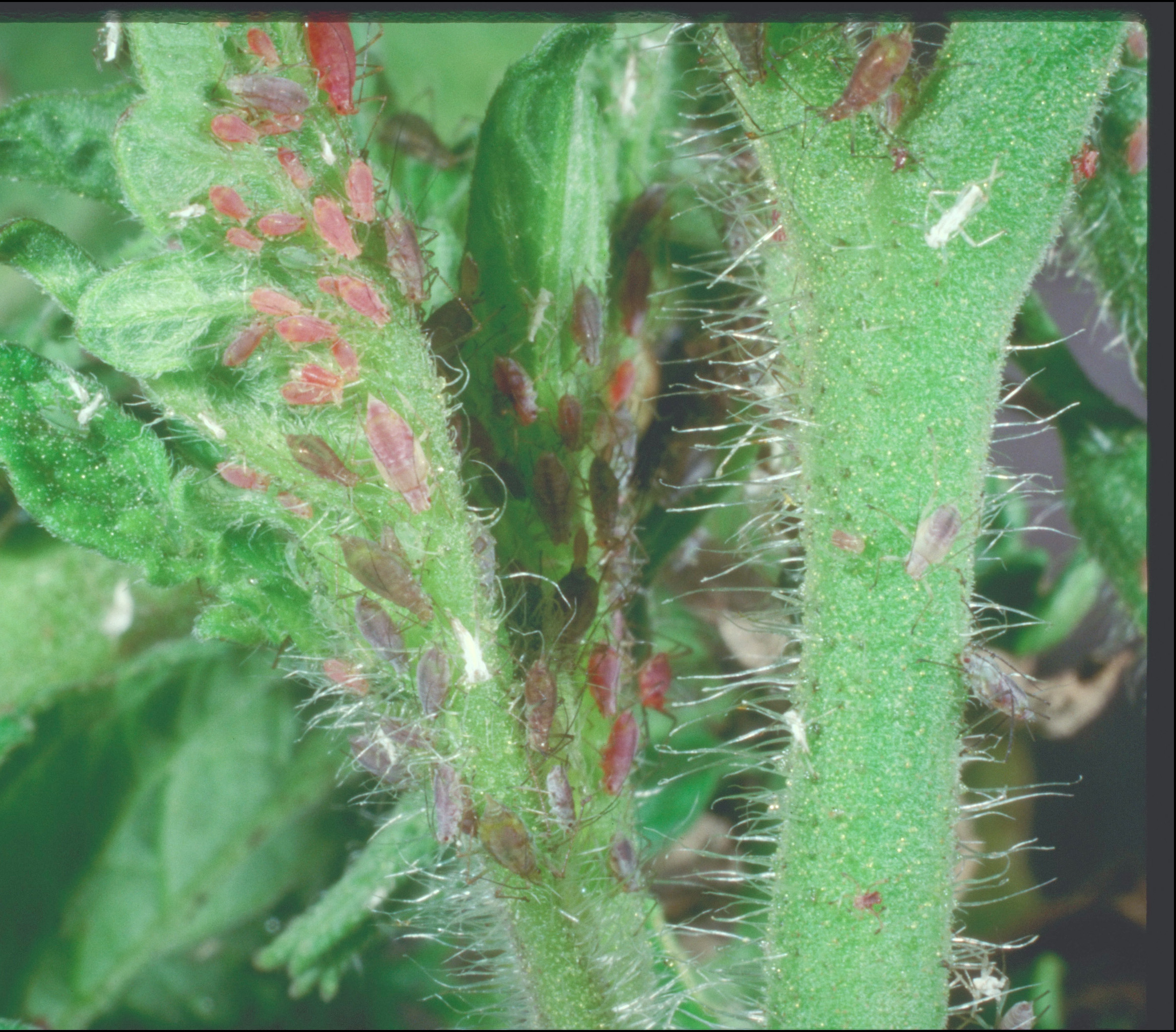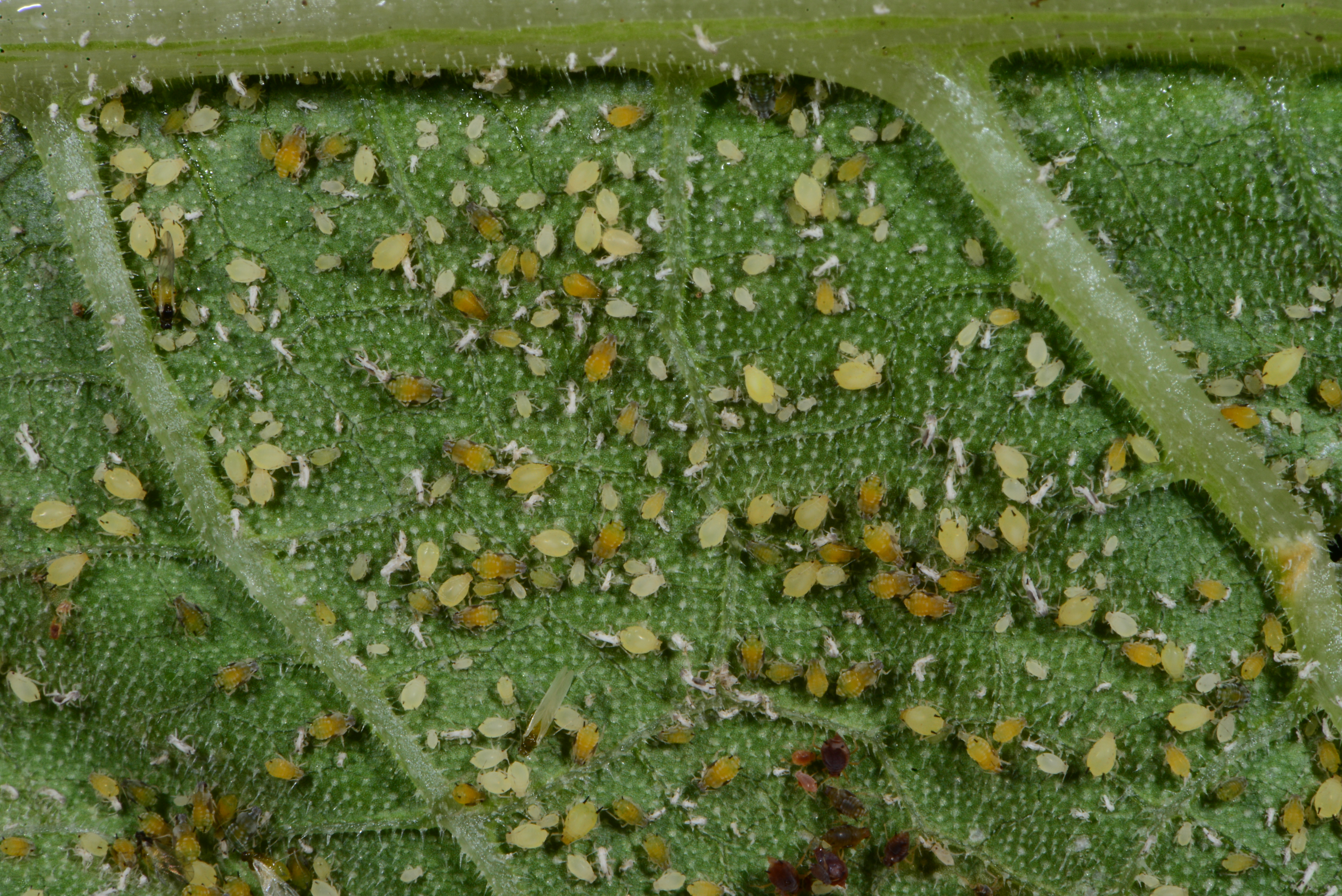Aphids
Return to Insect & Other Arthropod Pests
Aphids (Family Aphidae) occuring in high tunnels include green peach, melon (cotton), and potato aphids. Aphids feed with piercingsucking mouthparts and are vectors of several potyviruses. Aphid bodies are pear-shaped to round with two tailpipe-like projections (cornicles) near the end of their abdomens. Some adults are winged; others are wingless. Sugary honeydew and black sooty mold fungal growth are often found underneath aphid infestations. Large populations will turn leaves yellow, stunt plants, and reduce yields.

Potato aphids.
(Photo: Ric Bessin, University of Kentucky)

Melon aphids.
(Photo: Ric Bessin, University of Kentucky)
Green peach aphids.
(Photo: Ric Bessin, University of Kentucky)
Comparison of size and shape of potato aphid (center) and melon aphids.
(Photo: Ric Bessin, University of Kentucky)
Lacewing larvae use large sickle shaped mouth parts to feed on aphids.
(Photo: Ric Bessin, University of Kentucky)
Adults of some species of lacewings feed on aphids prior to laying eggs.
(Photo: Ric Bessin, University of Kentucky)
An adult stingless wasp has emerged from this aphid mummy.
This life stage indicated that the wasp has successfully parasitized the aphid.
(Photo: Ric Bessin, University of Kentucky)
Management:
- Release predators or minute wasp parasitoids, or use foliar insecticides.
- Banker plants can be used to sustain natural enemies.
- Eliminate weeds in and around structures.
- Monitor for winged aphids with yellow sticky cards.
- Avoid over fertilizing plants with nitrogen.
Biological control:
- Predatory lacewing eggs and/or larvae can be released for aphid suppression. Also available is a predatory fly (Aphidoletes aphidimyza). A number of species of tiny stingless wasps (aphid parasitoids) are commercially available for several different aphid species. For example, Aphidius colemani was recently released in a Kentucky greenhouse for suppression of melon aphids. The release of these wasps provided season long suppression of melon aphids in this structure. It is critical to identify the species of aphid pest to determine the most appropriate species of stingless wasp to release.
